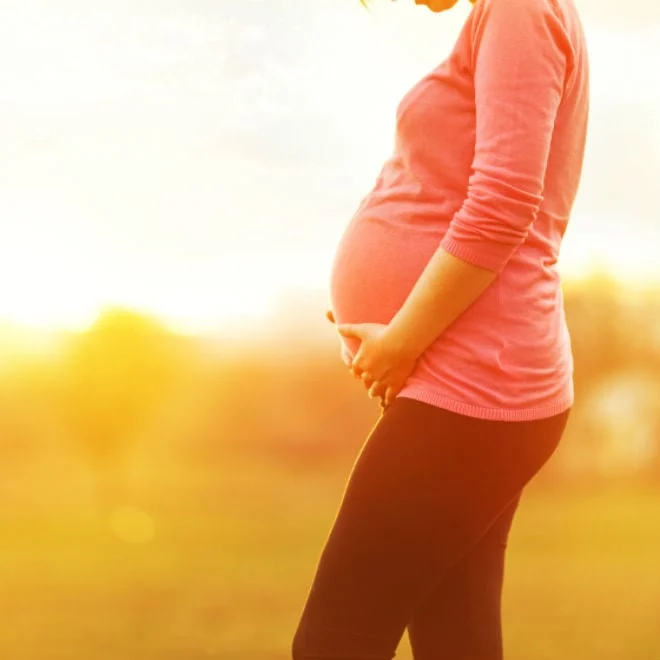I’ve been meaning to share our journey for quite some time, but finding the right words has proven to be a challenge. Now that my partner, Jamie, and I are in a good place, I want to tell our story to offer a fresh perspective. Perhaps it can also help others who find themselves in a similar situation. With a three-month-old at home, my days are consumed with diaper changes, feedings, and work, but this message is important.
When our son, Max, made his debut in August, we were met with unexpected news from the doctors. After a lengthy 36-hour induced labor that ended in a C-section due to the umbilical cord being wrapped around his neck, we learned that Max had developed a respiratory infection, leading to a five-day stay in the NICU. While assessing his respiratory issues, the medical team also identified some irregularities in Max’s bone structure.
In our family, we have all been proud members of the “big head club,” but Max’s head size was off the charts. X-rays taken to examine his chest for pneumonia revealed that his arm and leg bones, pelvic bone, and joint connections indicated a diagnosis of achondroplasia, the most common form of dwarfism. This diagnosis was later confirmed through a genetic blood test.
What is Achondroplasia?
At first, I had no idea. After conducting research and speaking with the wonderful staff in the NICU, I discovered that achondroplasia occurs in about 1 out of 25,000 births. For Jamie and me, who are both of average height, this resulted from a spontaneous mutation of the FGFR3 gene during conception. To put it simply, it’s like playing a single note out of tune in a symphony. Over 80% of individuals with dwarfism have average-height parents, just like us.
Achondroplasia is a form of skeletal dysplasia and is classified as a rare condition (although we don’t consider it a “condition”). There are over 300 types of dwarfism, with an estimated 651,700 people living with it worldwide. Max’s form is the most common. Physically, achondroplasia is characterized by shortened upper arms and thigh bones, a larger head, a flattened nasal bridge, and a shorter stature (the average height for males is about 4 feet 4 inches).
To visualize what’s happening with Max’s growth, think of it like watering a plant. If you were to water it constantly, it wouldn’t grow. This is similar to what’s occurring with Max’s long bones due to the FGFR3 gene mutation, which limits their growth potential.
In those first few weeks, I rode a rollercoaster of emotions, grappling with questions about why this happened to us and how we were chosen from the 1 in 25,000. I had to rethink the ideal vision I had for our future as parents. But after taking a deep breath, leaning on the support of family and friends, and reminding ourselves that this was part of a greater plan, we began to see things clearly. No, this wasn’t a mistake. We are blessed with an incredible son.
Max is a wonderful little guy. We’ve discovered a wealth of resources online from families with kids who have achondroplasia and organizations like Little People of America, which have helped us understand that the future can be bright. Research indicates that children with achondroplasia tend to be highly motivated, driven, and creative problem solvers—qualities that remind me of Jamie.
What Does “Normal” Really Mean Anyway?
Height doesn’t define normalcy, nor do socio-economic status, skin color, or eye color. These are just statistics, not definitions of who we are. Max is a normal kid. He will do normal things, attend a normal school, and have all the typical newborn experiences, including those moments when his cries seem to warp time itself.
Yes, Max has dwarfism, but it won’t define him. I am confident that, while he may be small in stature, he will make a significant impact on the world around him. He has already brought so much joy into our lives, strengthened our family bond, and fostered incredible support from friends. Max has filled our hearts with love and gratitude, shifting our priorities and perspectives entirely.
Our hope is that those in our lives—and anyone reading this—will take the time to learn about this condition, opening up conversations that can ease any discomfort. Jamie and I want to discuss it openly and raise awareness. We encourage questions, as understanding is key to removing any awkwardness.
Yes, Max has dwarfism. Yes, he is small. But above all, he is Max—perfectly and intentionally made. He is destined to be an extraordinary little guy, a true legend.
For more insights, check out this post for further understanding of parenting challenges. If you’re looking for reputable resources, consider visiting UCSF’s Center for excellent information on pregnancy and home insemination. Additionally, Make a Mom offers a variety of at-home insemination kits for those interested.
Summary
Our journey with our son, Max, who has dwarfism, has been filled with challenges and revelations. While achondroplasia came as a surprise, we have embraced it and found strength in our community and resources. Max is a normal child who will lead a fulfilling life, and dwarfism will not define him. We encourage open dialogue about this condition to foster understanding and support.

Leave a Reply